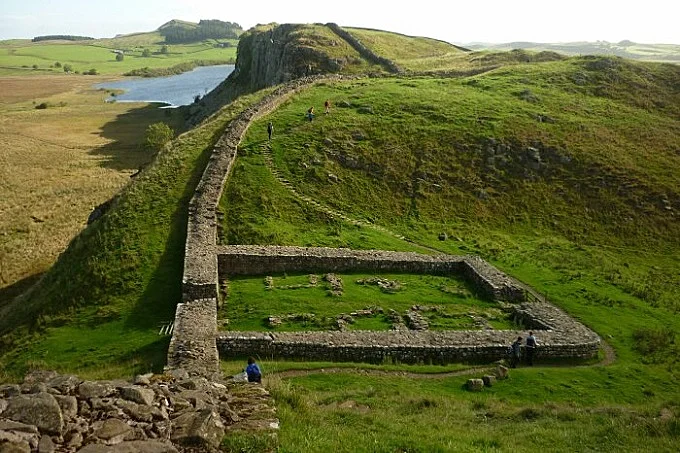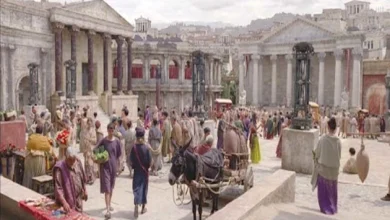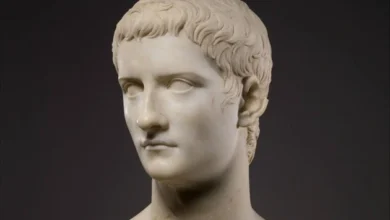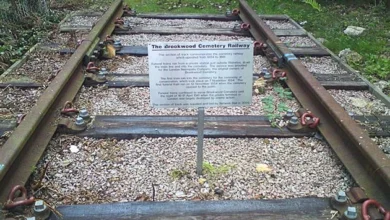Why did they build a wall almost 120 km long 300 years ago and was it useful?

Hadrian’s Wall was a milestone in Roman Britain for more than three hundred years. It took more than a year to complete the main phase of the construction of the Wall, and it was a monumental project involving thousands of people. What exactly was this complex and unique construction, why it was built, and whether it was of any use.
Prehistory
The Romans viewed ancient Britain as a mysterious island on the edge of the known world. Julius Caesar made the first attempt to reach its shores during a 55-54 BC expedition. But the Romans did not succeed in launching a successful invasion of the island until the summer of 43 AD. Under the command of Emperor Claudius, General Aulus Plautius and his legionary soldiers invaded southern Britain, and by early 44 AD, it had become another province of the Roman Empire. But all that changed in 122 AD when Emperor Hadrian visited Britain. Later that year, construction began on a structure that is known today as Hadrian’s Wall.
The Wall was located in what is now northern England. At its longest point, it reached one hundred and eighteen kilometers and extended from Wallsend-on-Tyne in the East to Bowness-on-Solway in the west.
The Wall itself was composed of stone blocks, but its dimensions varied along the route. The eastern section was about three meters wide, and more than four meters high, and the western section was six meters wide and more than four meters high. The last six kilometers of the Wall in both the East and west directions were the last to be built. Here the width was reduced to only two and a half meters.
In front of the Wall was also a V-shaped ditch more than eight meters wide and three meters deep. Behind the forts on the Wall, a rampart was also built for extra security. It was essentially a turf rampart with a palisade on top, six meters wide and three meters deep. Forts, military castles, and towers were placed at regular intervals along the Wall. Mile locks (fortified gates) were spaced every Roman mile (1,481 meters), and towers (observation towers) were spaced every third of a Roman mile (494 meters).
The forts provided living quarters for units of soldiers as well as storage and administrative buildings. Many of the forts connected to Hadrian’s Wall were actually built before the Wall became an official structure and frontier.
Some older forts were located in front of the Wall. These included outpost forts such as BuCastle, Birrens, and Netherby. These forts were not permanently inhabited but served as a strategic base for campaigns to the North. Sixteen forts were located on the route of the Wall, and the rest were behind it at the Stone Gate. It was a road built during the reign of Emperor Trajan (AD 98-117) that connected the forts from Corbridge to Carlisle.
The border separating the Romans from the barbarians
“Hadrian was the first to build a wall eighty miles long to separate the Romans from the barbarians.” (Scriptores Historiae Augustae, Vita Adriani 2.2). This is the only known ancient passage that explains why Hadrian’s Wall was built.
The creation of a physical border to protect the Romans from their enemies is perhaps the most obvious reason for building the Wall. When the Romans arrived in the first century AD, ancient Britain was inhabited by various tribes, each controlling a different area of the island. Not all of these tribes gave up their homeland easily, and pockets of animosity persisted throughout the four hundred years of Roman occupation. Some of the most militant were the tribes of Caledonia, present-day Scotland, known for their warlike and fearless spirit.
Caledonia occupied most of the territory north of the Wall, and the main tribes living there were the Caledonians and Damnonians. These people were of Celtic origin and had social and trade ties with the Gauls of modern Northern Europe. The combat tactics of the Caledonian tribes were ruthless, and their weapons were brutal. The Romans were never able to defeat them completely, and rebellions broke out regularly. Some progress was made in the 1980s AD, but during the reign of Emperor Trajan, the Romans retreated from the Caledonian lands.
When Hadrian’s Wall was built in 122 AD, it helped protect the Romans from the Caledonian barbarians. But it also served to divide the tribes on either side of it. Over time, the lack of communication between the tribes of Caledonia and northern England led to a general weakening of tribal authority.
The Wall was originally intended as a base for launching necessary expeditions to Caledonia. But over time, it also became a frontier on which to monitor the movement of people and trade, which also created a point of taxation. Interestingly, another wall was soon built a hundred miles to the North during the reign of Hadrian’s successor, Emperor Antoninus Pius (AD 138-161).
Antoninus’ Wall was half as long as Hadrian’s because it was built at a narrow point between Bridges to the East and Old Kilpatrick to the west. The final reason for the construction of this new Wall is unknown, but some historians believe that it indicates the failure of Hadrian’s Wall as an effective defensive barrier. Nevertheless, Antoninus’ Wall was abandoned in the 160s AD, and Hadrian’s Wall was used again for the next two hundred years.
Emperor Hadrian
Emperor Hadrian ruled the Roman Empire from 117 to 138 AD. Before he came to power, he held a number of elite political positions and was a member of Emperor Trajan’s campaign staff. But Hadrian was also known as an educated, scholarly man who was fascinated by the sophisticated Greek world throughout his life.
Soon after Hadrian became emperor, he withdrew the Roman military presence from the East. His predecessor Trajan had campaigned against the Parthians in present-day Iran from 114 to 117 AD. But Hadrian felt that these conquests were untenable. Instead, he wanted to take control of what already existed in the Empire and usher in an era of stability and peace. Hadrian’s Wall was built in accordance with this new foreign policy. Its vast frontier limited the Empire and thus its expansion. Nevertheless, the Wall did not suit everyone.
In AD 208, Emperor Lucius Septimius Severus decided to try to do what no emperor had managed to do before: conquer Caledonia once and for all. So he launched a major invasion with an army of nearly fifty thousand men, which at first seemed successful. A shaky peace treaty was concluded, but soon the revolts resumed. Then, in early AD 211, North suddenly fell ill and died. His sons, Caracalla and Geta, decided to leave unruly Caledonia behind and retreated beyond the Wall.
Hadrian’s Wall

Units of various Roman legions came to Britain from all over the Empire to build the Wall in the 120s AD. By the end of Hadrian’s reign, the garrison stationed at the Wall numbered between nine and fifteen thousand men. Initially, auxiliary regiments were sent to the Wall, but in later years legionary units also appeared. The inscriptions left behind contain useful information about the varied military presence at the forts along the Wall. Evidence includes vow altars and tombstones dedicated to men who were natives of places like the Netherlands and even Syria.
One of the main reasons the Wall was built was to provide a major base for the Roman military throughout the province. But it is also important to note that some Roman soldiers spent years of their lives at the Wall. For many, it became not only a place of work but also a home.
The military forts on Hadrian’s Wall were more like small fortified cities. In addition to sleeping barracks, the forts also included hospitals, barns, sacred chapels, and administrative buildings. There was even a large villa for the commander and his family. One of the most well-documented forts on the Wall is Windoland, located on Stangate Road twenty-five miles east of present-day Carlisle.
Since the 1970s, hundreds of well-preserved wooden writing tablets have been discovered at the site. The tablets date from about 90-120 AD, when the fort was occupied by Cohors I Tungrorum and Cohors IX Batavorum. These tablets contain the largest discovery of Latin letters to date, and they provide a fascinating insight into everyday life at the Wall. There are task lists and inventories, as well as personal letters written between friends. There is even a birthday invitation written by the wife of one high-ranking soldier to her sister.
After the successful invasion of 43 AD, Roman culture gradually began to penetrate the lands of the tribes of ancient Britain. The Romans attempted to create harmony between conquerors and vanquished through a process historians today call “Romanization. This process involved introducing the local population to elements of Roman culture without forcibly suppressing the way of life of the indigenous peoples.
The Roman historian Tacitus is a major source of information on the policy of Romanization. He presents a cynical and biased view of this concept in his biography of Agricola, who was governor of Britain from 78 to 84 AD.
“(Agricola) wanted to accustom them (the Britons) to rest and leisure by providing delightful entertainment… The naive Britons described these things as ‘civilization,’ though in reality, they were simply part of their enslavement.” (Tacitus, On the Life and Character of Julius Agricola)
Architecture was an important part of Romanization. Temples were built to arouse interest in the Roman gods. However, the Romans did not prevent the Britons from worshipping their own gods. Theaters and amphitheaters encouraged participation in Roman entertainment. New cities with public baths and stores also offered access to a more refined way of life. All of this was used as a means to conquer the local population.
Hadrian’s Wall was a powerful catalyst for Romanization as it brought thousands of Roman soldiers to Britain. These men brought food, clothing, religion, and even cooking utensils. All of these cultural markers had a lasting impact on the people of Britain. Soldiers also infiltrated the local population through marriages. There are many examples of Roman soldiers marrying local women and staying in Britain after their service to settle their lives.
Hadrian’s Wall was built primarily as a border with the Roman Empire. This border provided protection from hostile enemies and a base for military units. But the Wall was also a perpetual monument to Hadrian, an emperor who valued peace and stability more than military expansion and personal triumph.
Hadrian’s Wall represented the very best of Roman engineering and infrastructure. The enormous size and durability of the Wall, along with its military presence, would serve as a constant reminder to the local population that they lived under Roman control. Much of the Roman Empire’s success was due to its ability to effectively subdue local populations and create stable provinces. The presence of the Wall may have contributed greatly to the success of the Roman occupation of Britain, which lasted more than four hundred years.




